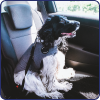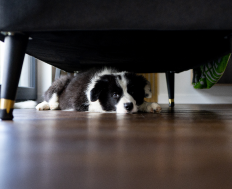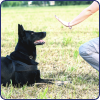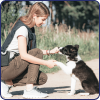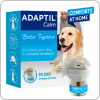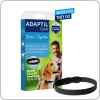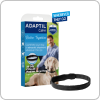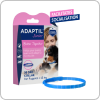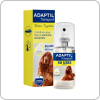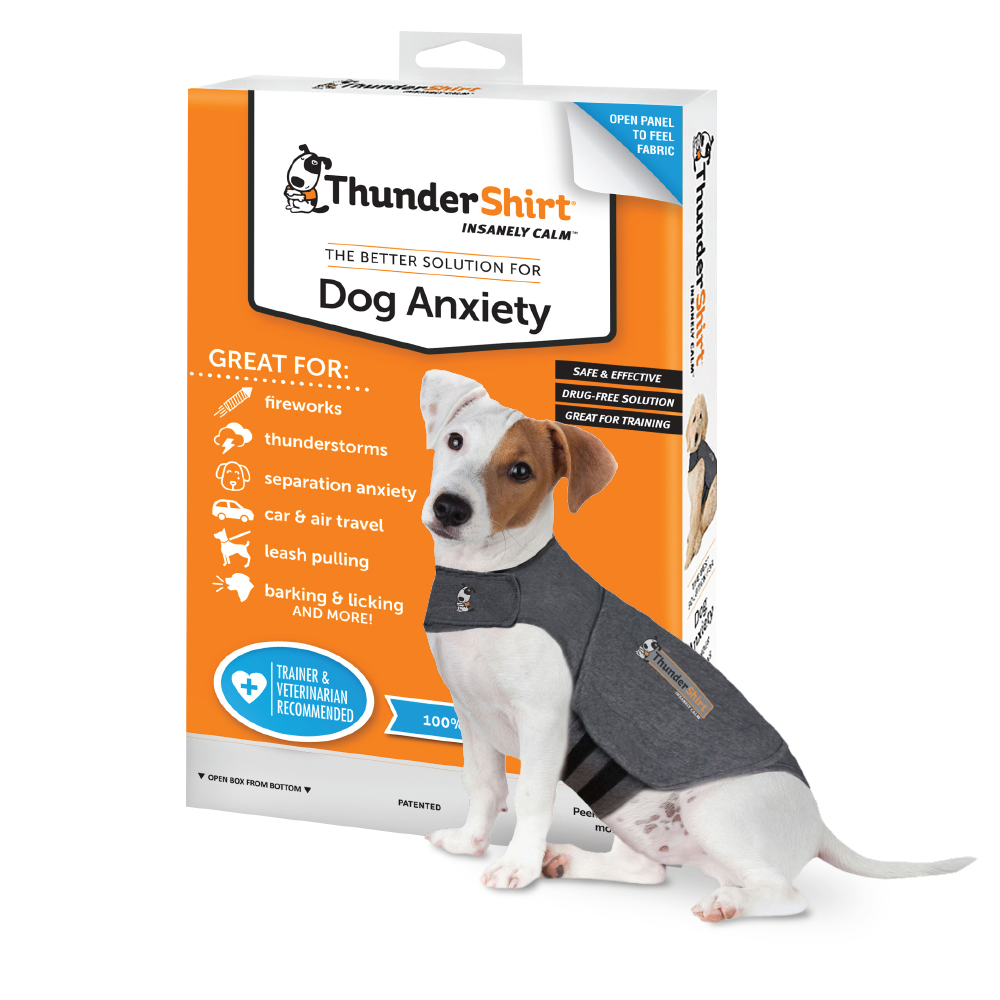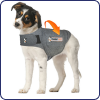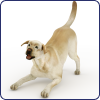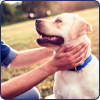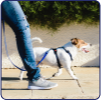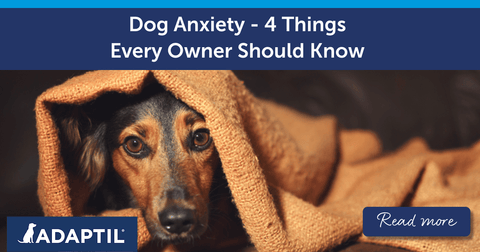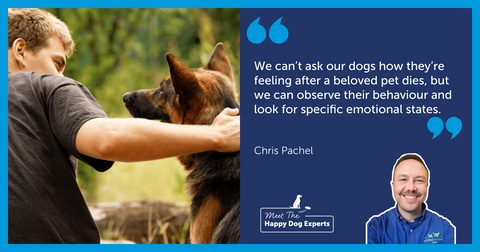
Happy Dog Expert: Can a Dog Have Alzheimer’s?
Advances in nutrition, technology, and veterinary care have greatly increased the life expectancy of our dogs. However, while we are very concerned about the changes that age produces in some of their organs – such as the heart and the kidney, or in some mechanisms such as the locomotor system (we should all be aware of the signs of osteoarthritis that some older dogs can suffer) – we are generally not very aware of how dogs age cognitively or at a behavioural level.
Understanding Dogs & Alzheimer’s
Dogs' brains can age in a healthy way, showing certain deficits that do not interfere with their quality of life. However, they can also age in a pathological way, i.e. showing a form of dementia that in veterinary medicine is known as Cognitive Dysfunction Syndrome (CDS).

CDS is very similar to Alzheimer's disease in humans (see box:1). Certain proteins called amyloid are deposited in the brains of dogs with CDS, leading to the death of neurons and changes in cerebral blood vessels. Neuronal death is also aided by oxidative damage that appears to be greater than in elderly dogs that do not have the disease.
Box 1: Classification of how a dog's brain can age.

How does Cognitive Dysfunction Syndrome Affect Dogs?
CDS is a neurodegenerative disease; it appears and progresses slowly, over 18-24 months or even longer, and occurs only in older animals. It has been estimated that the average age of onset of CDS in dogs is 11 years and the likelihood of developing CDS increases with age, with 80% of dogs over 13 years of age showing signs of dementia.
On the other hand, if a dog suffers from CDS, this is not expected to have a negative influence on their life expectancy. As their humans, it’s our role to ensure our dogs maintain their quality of life through their old age.
Recognising CDS Symptoms in Dogs
The clinical signs of CDS in dogs are usually summarised in the acronym DISHAA and are listed in table 1.
Table 1: Clinical signs of CDS following the acronym DISHAA (modified from Landsberg et al. 2017)
|
D - Disorientation |
Some animals get lost in familiar places, try to go through the wrong side of the door, are unable to avoid certain obstacles or stand in front of them, or stare at nothing. |
|
I - Interactions |
Interactions with people, animals, or the environment may also be affected. For example, their interest in petting or contact decreases, they greet with less emphasis, and they stop playing with their guardians or with other dogs. Problems of fear or aggression may also appear. |
|
S - Sleep |
The rhythm of sleep and wakefulness is often affected. Many of these dogs sleep more during the day and do not rest at night. |
|
H – Hygiene habits |
In some cases, elimination behaviour is lost, and the dog urinates and/or defecates in inappropriate places. In addition, they show a poor response to learned commands or loss of interest in activities they used to do. |
|
A - Activity |
Both decreased activity and increased activity with repetitive behaviour and wandering may be observed. |
|
A - Anxiety |
Dogs with CDS are very prone to anxiety which may result in increased vocalisation (barking, whining), fear, or phobias to different stimuli. |
CDS is usually ruled out by exclusion of other diseases that occur in a very similar way. So, it is very important that we go to the vet if you see signs like the ones mentioned above in your dog, as they may be symptoms of CDS (or other pathologies).

How to Help Dogs with Cognitive Dysfunction Syndrome
Although CDS cannot be cured, there are several tools that can be used to slow its progression and improve the quality of life of our best friend. Vets will usually prescribe the use of drugs, dietary products, and/or pheromones depending on the symptoms and how advanced the disease is. In addition, they will recommend a series of behavioural guidelines which, broadly speaking, may include:
- Maintaining a predictable and consistent routine in terms of activities that revolve around your dog.
- Playing with your dog; especially sniffing games, games of hide and seek or treats, as well as other games like tug of war.
- Positive education with simple cues.
- Using interactive toys.
- Appropriate exercise according to your dog's needs and limitations, which can often include short but frequent walks.
- Positive interactions that avoid punishment.
- Adapting the environment to your dog's limitations in order to reduce stress. For example, if your dog likes getting on the sofa but now has sore joints, we can put down ramps or stairs to make access easier. If your dog urinates or defecates at home, you can create a toileting area as we would with a puppy by using puppy pads or newspapers and taking them out more frequently.
As a veterinarian, I must remind you that signs of dementia in older dogs are always the result of disease and should be discussed with your vet, and that a dog who is ageing in a healthy way should not show major cognitive deficits.
As the guardian of two elderly dogs myself, I am very happy to be able to accompany them during this stage of their lives. It is a complex period when illnesses start to appear – and yes, one of my
dogs has CDS – but it is also a period when you can do a lot for them to improve their quality of life, and when you can especially enjoy the moments you share daily.
Would you like to receive more specialist and expert advice from our team of Happy Dog Experts? Browse our full range of articles online, covering everything from how we can enrich our dog’s environment to helping dogs through their troublesome teenage years. You can also get in touch to ask any questions, or stay informed with our latest tips, advice, and Q&As by signing up to our newsletter.
Bibliography
- González-Martínez Á, Rosado B, Pesini P, et al. Plasma β-amyloid peptides in canine aging and cognitive dysfunction as a model of Alzheimer’s disease. Exp Gerontol. 2011;46(7):590-596. doi:10.1016/j.exger.2011.02.013
- Landsberg GM, DePorter T, Araujo JA. Clinical signs and management of anxiety, sleeplessness, and cognitive dysfunction in the senior pet. Vet Clin North Am - Small Anim Pract. 2011;41(3):565-590. doi:10.1016/j.cvsm.2011.03.017
- Landsberg GM, DePorter T, Araujo JA. Clinical signs and management of anxiety, sleeplessness, and cognitive dysfunction in the senior pet. Vet Clin North Am - Small Anim Pract. 2011;41(3):565-590. doi:10.1016/j.cvsm.2011.03.017
- Rofina JE, Van Ederen AM, Toussaint MJM, et al. Cognitive disturbances in old dogs suffering from the canine counterpart of Alzheimer’s disease. Brain Res. 2006;1069(1):216-226. doi:10.1016/j.brainres.2005.11.021
